




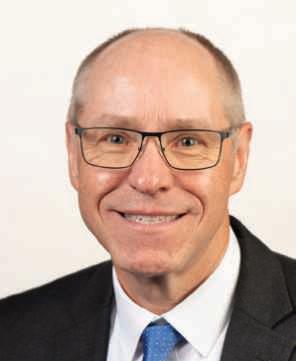 CEO/GM
CEO/GM
April showers bring May flowers! The old folklore of 90 days after a fog has certainly panned out. I am not sure about the other one I heard at Easter; rain on Easter Sunday means moisture the next seven Sundays. It has been close!
I recently attended the annual NRECA Legislative Conference held in Washington D.C. There certainly was plenty of “fog, doom and gloom” at the conference discussing four of the most troubling topics at hand. We presented our legislators with topics of concern to the electric cooperatives. We ended up scheduled when Congress was not in session that week, however, we did get an opportunity to see our senators when the Senate was called back to session to vote on Ukraine bills. From the electric cooperative standpoint, we are incredibly lucky we have the three people we have in South Dakota as they are very supportive of electric cooperative issues.
One of the topics discussed, and the most important one, was to discuss electric reliability and maintaining it at an affordable rate. Both of those are being seriously threatened. Everyone expects the lights to stay on every hour of every day without causing a financial burden. As the demand for electricity rises, and baseload generation is being retired, regulatory pressures are impacting our ability to maintain a diverse and reliable energy mix.
Renewable energy sources undoubtedly play a crucial role in our all-of-the-above energy strategy, but we must also acknowledge the limitations of relying solely on intermittent sources like solar and wind. Our energy policies must strike a balance that ensures a steady and affordable power supply around the clock.
To that end, the day after we arrived back from D.C., the EPA announced the latest
version of the Clean Power Plan 2.0. In all reality, it would shutter all coal plants by the mid 2030s and limit natural gas generation. They have work arounds like carbon capture and hydrogen. Guess what; those are not currently commercially available as an option. I do not think the EPA realizes that we cannot walk down to the corner Wall Building Center and pick up a new power plant to power 300,000 plus homes. We rallied that point hard to our congressmen. 75901
We presented on the critical role of USDA funding for rural communities as well as the infrastructure grant programs available. We utilize the Rural Electric Economic Development fund (REED) to secure USDA Rural Economic Loan and Grant (REDLG) funding that helps drive economic growth and development in our rural areas. The manager from the Mitchell area focused on how the USDA funds through REED are important drivers in our growth but how regulations are driving a wedge in that gap. He stated they had a new business wanting to move into their area. Everything was secured but the environmental clearance had gotten so drug out, that the business went looking elsewhere. A prime-time example of an over regulatory burden placed on so many programs that instead of fueling growth, stymied it.
There were other issues we discussed but those were the two biggest ones. We have co-ops all over the nation, but we all become unified to tell the struggles we face each day.
As always, PLEASE STAY SAFE!
(USPS No. 675-840)
Our Mission:
To serve our members’ best interest.
Our Vision:
We will be a high performing co-op.
Our Values:
1. Safety 2. Accountability
3. Integrity 4. Innovation
5. Commitment to Community
This institution is an equal opportunity provider and employer.
Board President: Andy Moon
Board of Directors
Stan Anders – Vice President
Jamie Lewis – Secretary
Chuck Sloan – Treasurer
Larry Eisenbraun
Peter Blake
Marcia Arneson
Howard Knuppe
Sue Peters
CEO and General Manager: Dick Johnson –dick.johnson@westriver.coop
Editor Amanda Haugen –amanda.haugen@westriver.coop
WEST RIVER ELECTRIC COOPERATIVE CONNECTIONS is the monthly publication for the members of West River Electric Association. Members subscribe to Cooperative Connections as part of their electric cooperative membership for $6 a year. West River Electric Cooperative Connections purpose is to provide reliable, helpful information to electric cooperative members on matters pertaining to rural electrification and better living. Nonmember subscriptions are available for $12 per year. Periodicals Postage paid at Wall, S.D., and at additional mailing offices. Postmaster: Send address changes to West River Electric Cooperative Connections, PO Box 412 , Wall, SD 57790-0412.
Other correspondence to: West River Electric Cooperative Connections, 3250 E Hwy 44, Rapid City, SD 57703; telephone (605)393-1500, Exts. 6519, 6531 or 6522; fax (605)393- 0275; e-mail robert.raker@westriver.coop.

Camden Sawvell, a lineman out of our Wall office, finished his Apprenticeship and has been promoted to Journeyman Lineman. To reach this milestone, one must complete line school from an accredited lineman school and complete the four-year apprenticeship continuing education course through Northwest Lineman’s College.
Within that four-year time span, 8,000 verified on-the-job training hours,
documented through the Department of Labor, must be met as well. West River Electric has an apprenticeship committee to ensure progress is being made and they meet requirements. If one fails to meet a requirement, they could be held back from their next step towards completing their apprenticeship.
We would like to congratulate Camden on his hard work and for his commitment to serving the membership.
In only a matter of minutes, a small house fire can rage out of control, reaching temperatures of up to 1,500°F. In most cases, you have one to two minutes to get out safely.
We practice fire emergency drills at work and school, but don’t forget to create and practice a home escape plan, as well. It is beneficial to keep your plan visible, like on the refrigerator, to help family and visitors remember what to do. The Federal Emergency Management Agency (FEMA) stresses that even children as young as three years old can understand an escape plan.
Helpful Planning Tips:
• Plan for two ways to escape from each room.
• Pick a meeting location away from your home.
• Plan for everyone in your home, including babies and others who may need help to escape.
• Teach children not to hide during a fire; they must get out and stay out.

• Practice your escape drill with everyone in your family at least twice a year.
Ways to Stay Safe:
• Clear toys, furniture and other clutter from exits.
• Check that windows open easily – fix any that stick.
• Test the batteries in your smoke alarms monthly.
• Be sure that security bars on doors and windows have a quick-release latch, and everyone knows how to open them.
• If you live in a multi-story apartment building, map out as many escape routes as possible to get to the stairways on your floor.
• If you live in a high-rise, plan to use the stairs – never the elevator – to escape a fire.
• A secondary route might be a window onto an adjacent roof or a collapsible ladder for escape from upper-story windows – purchase only collapsible ladders evaluated by a nationally recognized laboratory, such as Underwriters Laboratory (UL).
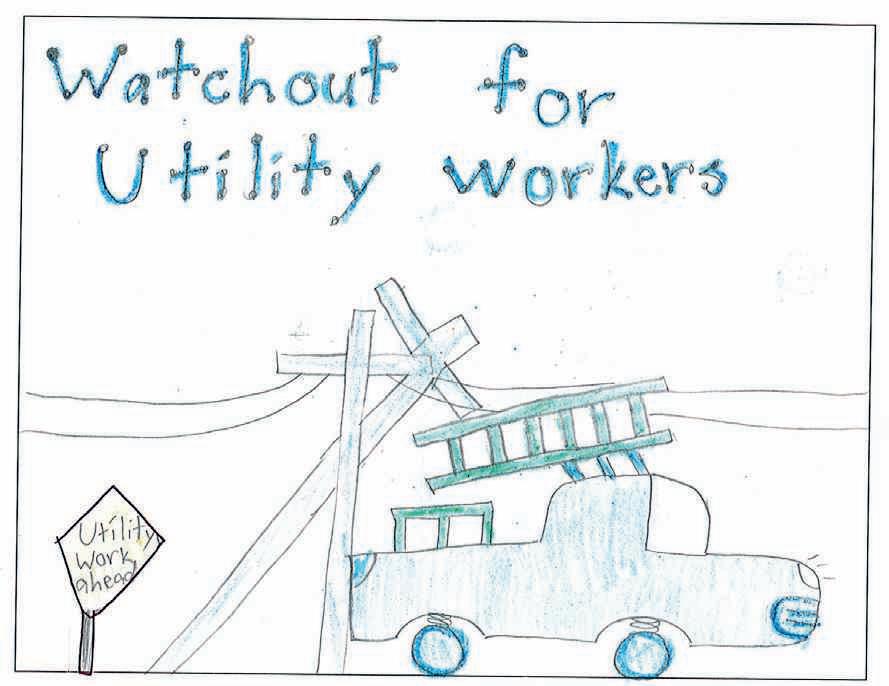
Reese Rindels cautions readers to watch out for utility workers. Reese’s parents are Rochelle and Kyle Rindels, members of Sioux Valley Energy.
Kids, send your drawing with an electrical safety tip to your local electric cooperative (address found on Page 3). If your poster is published, you’ll receive a prize. All entries must include your name, age, mailing address and the names of your parents. Colored drawings are encouraged.

CHOCOLATE FUDGE FROSTING
Ingredients:
2 1/4 cups confectioners’ sugar
1/4 cup unsweetened cocoa powder
1/4 tsp. cinnamon
6 oz. (3/4 package) cream cheese, softened
3/4 cup (1 1/2 sticks) butter, softened
8 oz. semi-sweet chocolate, melted and cooled slightly 1 tbsp. pure vanilla extract
Method
Mix sugar, cocoa powder and cinnamon in medium bowl until well blended. Set aside. Beat cream cheese and butter in large bowl with electric mixer on medium speed until smooth. Gradually beat in cocoa mixture on low speed until well blended. Gradually beat in melted chocolate then vanilla until well blended.
McCormick.com
RED VELVET HOT CHOCOLATE
Ingredients:
4 cups whole milk
1/4 cup sugar
10 oz. semi-sweet baking chocolate, coarsely chopped
2 tsps. red food color
1 tsp. pure vanilla extract
Vanilla Whipped Cream
1/2 cup heavy cream
2 tbsps. confectioners’ sugar
1/2 tsp. pure vanilla extract
Method
Place milk and granulated sugar in medium saucepan. While stiring, bring to simmer on medium heat. Remove from heat. Stir in chocolate with wire whisk until melted. Stir in food color and vanilla. Serve with marshmallows.
For the vanilla whipped cream, beat heavy cream, confectioners’ sugar and vanilla in medium bowl with electric mixer on high speed until stiff peaks form.
McCormick.com
LEMON PUDDING DESSERT
Ingredients:
1 cup COLD butter
1 8 oz. pkg. cream cheese, softened
1 8 oz. tub cool whip, divided
2 pkgs. (small) instant lemon pudding
2 cups flour
1 cup powdered sugar
3 cups COLD milk
Method
In bowl, cut butter into flour until crumbly. Press into an ungreased 9 x 13 inch glass pan. Bake at 350 degrees for 18 to 22 minutes or until set. Cool on wire rack. In mixing bowl, beat cream cheese and powdered sugar until smooth. Fold in one cup cool whip. Spread over cooled crust. In bowl, beat milk and pudding mixes on low speed for 2 minutes. Carefully spread over cream cheese layer. Top with remaining cool whip. Refrigerate for at least 1 hour or more. Yields 12 to 16 servings.
Mary Jessen Holabird, S.D.
Please send your favorite recipes to your local electric cooperative (address found on Page 3). Each recipe printed will be entered into a drawing for a prize in December 2024. All entries must include your name, mailing address, phone number and cooperative name.
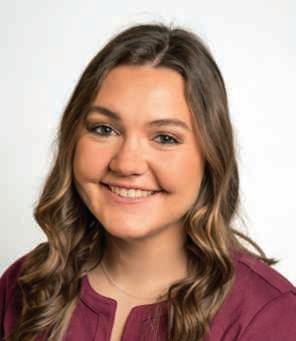
At the April 2024 West River Electric Board of Directors meeting, two incumbent directors, Andy Moon of Creighton for District 3 and Stan Anders of Union Center for District 2 have announced their intent to seek re-election to the Board of Directors of West River Electric Association. However, Howard Knuppe from District 1 let us know he has elected to not seek re-election. 81100
This means Andy Moon of Creighton for District 3 and Stan Anders of Union Center for District 2 will be asking for your vote as they seek re-election at the Oct. 12, 2024, Annual Meeting of the membership of West River Electric. As for who will be the candidates for the District 1 seat, is yet to be determined.
Per Article V Section 4 of the bylaws of West River Electric a member may seek election to the Board of Directors of West River Electric by taking out a petition and have it signed by at least 15 members at least 120 days but not less than 60 days prior to the annual meeting.
The deadline for petitions is August 13, 2024, by 5pm. No nominations are taken from the floor at the annual meeting. Candidates must be members of the cooperative and reside in the district they are seeking election from, be in good standing with the cooperative and not be employed or financially interested in a competing enterprise or major supplier to the cooperative.
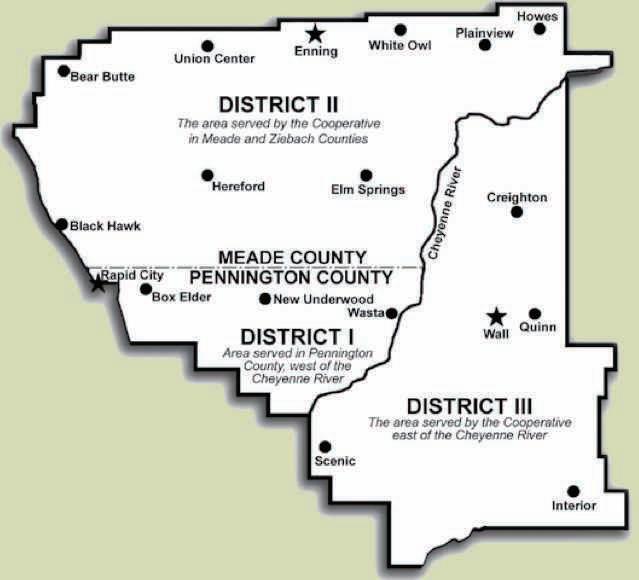

Finally, I would be remiss if I did not mention our deepest gratitude for Howard Knuppe. Howard has served as a District 1 Board of Director for West River Electric Association for the past 35 years. He has worked tirelessly to uphold West River Electric’s mission of providing
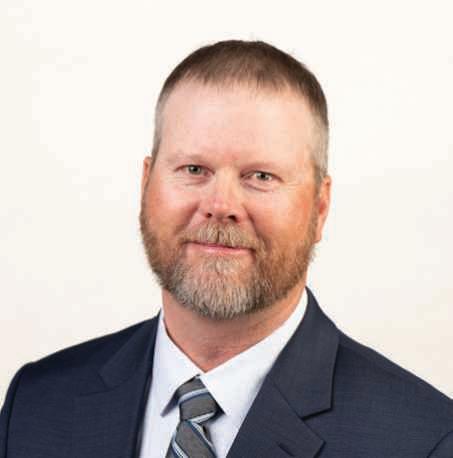
reliable, affordable, and sustainable electricity to its members. Howard’s commitment and dedication to the members, employees, organization, and community at large has been nothing short of great and we extend our gratitude and appreciation to him for his many years of service.













 Brendan Nelson Operations Superintendent
Brendan Nelson Operations Superintendent
As the warmer weather moves in and spring approaches, the list of spring projects start to generate. We want to remind you as you head outdoors to start on landscape or other yard projects to call before you dig. This will help eliminate any risk of injury, possible fines or cost to repair any underground utility damages.
Whether the project is perceived to be large or small, utility locates should always be called in. Some project examples are excavation around your foundation, footings for a new deck, putting up a fence, replacing the mailbox posts or planting flowerbeds, shrubs or trees. Buried utilities are everywhere, and due to prior excavation, erosion or just improper installation in the first place, they may be a couple inches below the ground. Therefore, it is crucial to call before you dig.
Before putting a shovel, backhoe, or excavator in the ground, call 811 at least 48 business hours before you begin your project. This is the national call-before-you-dig number, and it is a free service available to you. Simply dial the 811 number or go directly to call811.com to submit a request. Have the address of where you plan to dig handy, including the county and nearest cross street to ensure exact location. You will also need to have the type of project you are completing and the exact location on the property of where you will be performing the project. Whether you are calling 811 or submitting a request online, you will need the

same information for both.
Once 811 has been contacted, now you wait. All utilities will respond to your request and mark the necessary utilities within your project territory. Once all utilities have been marked, carefully hand dig at least 18 inches around the marked utility to ensure you won’t hit the lines with the big digging equipment.


Shannon Marvel shannon.marvel@sdrea.coop
Soukup Homestead: Raising families and farmers for over 125 years
Nestled in the heart of southcentral South Dakota lies a cherished piece of land with a name that’s been long-established in Charles Mix County – the Soukup Homestead.
Almost anyone with Wagner ties knows a Soukup.
There are even a few members of the Soukup family who are also part of South Dakota’s rural electric cooperative family, including Charles Mix Electric District 1 Director Denise Soukup. But it all had to start somewhere, and good things take time.
That was the case for the Soukup’s Century Farm and the Gronseth/Fiegel/Nelson/Evans homestead, a farm located near Britton that’s served by Lake Region Electric.
Really, it’s a common theme for Century Farm families to be located within rural electric cooperative service areas.
The South Dakota Farm Bureau and the South Dakota Department of Agriculture and Natural Resources began the Century Farm Program in 1984 to recognize farm and ranch families who have kept the farm in the family for 100 years or more.
Farms reaching the milestone of 125 years, known as
Quasquicentennial Farms, and the venerable Sesquicentennial Farms, marking an impressive 150 years, are also given their due recognition.
With over 3,000 families honored to date, the program continues to shine a light on the enduring legacy of South Dakota’s agricultural heritage. To qualify for these prestigious honors, farms must encompass at least 80 acres and provide documented proof of their original purchase date. That means a family member must have always had ownership of the land over the last 100 years, including during the Great Depression and Dust Bowl.
The annual award presentation is a cherished tradition held at the South Dakota State Fair.
After migrating with family from what is now known today as the Czech Republic in the late 1800s, Joseph and Mary Soukup
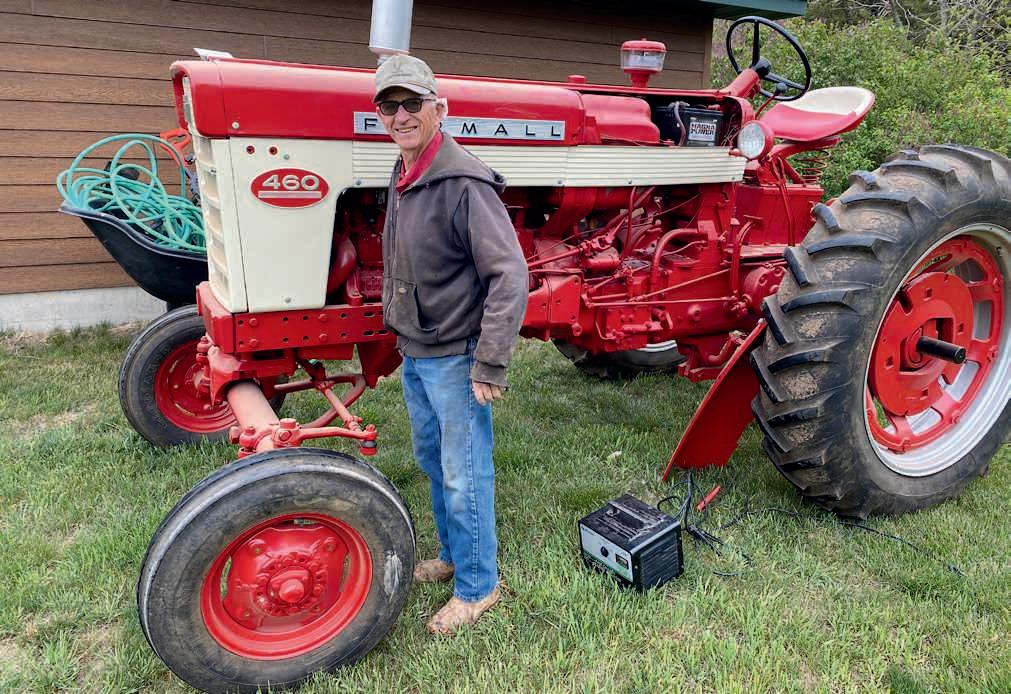
came to the Dakota Territory at a time when most of the land open for settlement had already been settled.
While living in Tabor with family, Joseph Soukup applied for a homestead on reservation land that was now open for settlement at the U.S. Land Office in town of Mitchell on Jan. 30, 1896.
“In the following five years he built a frame house 13 feet by 18 feet in order to establish a residence, then a grainery, a corn crib, and he also fenced in 80 acres,” said Linda Soukup, the wife of Tom Soukup. Her husband is Joseph and Mary’s grandson.
Joseph and Mary raised ten children on the very homestead that Tom and Linda raised their kids.
“There’s a lot of pride in the heritage and the legacy of, you know, having it passed down,” Linda said. A new house was built on the site of Joseph and Mary’s original home’s structure in 1952.
That’s where Tom and Linda lived and became the third generation to live on the homestead.
“When we lived here and Tom’s parents and their brothers and sisters used to all come here,” Linda said, as she started walking towards one of the farm buildings on the property referred to as “the shed.”
“And they would butcher hogs and cattle and we would process them down there. We had a meat cooler in the basement. And then one of the families owned the meat saw and one owned the sausage stuffer,” she recalled. “That was always kind of what we did until, well, families got bigger, and you couldn’t. You just couldn’t keep up, you know? We could have had a critter in there all the time,” she said.
Tom and Linda raised their children –Becky, David, Kathy and Mary – in the house as well.
Their son David works as a project engineer for Phillips Petroleum in Texas. Two of their daughters live in different towns but remain relatively close to the homestead.
Kathy Jaeger lives in Tyndall and Mary Ringling lives in Platte. In 1996, their daughter Becky and her husband, Mike
Brunsing were living in Montana when Tom and Linda decided to move into town, so in 1998 the Brunsings moved back to South Dakota and began helping Tom on the farm while living in the house.
Becky raised three children of her own in the house she grew up in herself.
Becky and Mike still live on the homestead but in a more recently built home.
Now her son Dylan, 28, is raising his own family in the 1952 farmhouse.
In doing so, he became the fifth generation on the homestead.
Dylan and his wife, Keely, have two sons – a 20-month-old and an infant born in late March.
After 126 years, Torger Gronseth’s homestead continues to bring family together.
It’s hard for Carol Evans to put into words how she feels when she reflects on the 126 years of history of her family’s farm in Marshall County.
“It’s so important to us,” Evans said. Then she takes pause.
“I’m sorry, it’s emotional for me,” she says, before telling her family’s – and the farm’s – origin story.
In 1872, her great grandfather, Torger Gronseth, immigrated to America from Norway at only 14 years old.
He made the trip to join his eldest brother in Minnesota. He officially “staked his claim” and homesteaded in the Pleasant Valley Township of Marshall County in 1901.
Over the next two decades, Torger and his wife, Berthe Lea, amassed over 960 acres of undeveloped land in the Coteau de Prairie of northeastern South Dakota.
To each of their six children, Torger bequeathed a quarter of land.
The pioneering couple sold a quarter to their daughter, Louise, upon her marriage to George Fiegel for $1.
While they were building the house that Carol and Frank Evans now call home, the Fiegels welcomed their first child.
“All of them were born in that house built in 1920. The first born was born on
the actual homestead. The house was being built when my first aunt was born,” Evans said.
Louise and George owned the house and quarter of land until 1972, at which point ownership was passed onto their daughter Joyce and her husband Orvin Nelson.
“We bought the house in 2011. Last year after my mom passed, we were able to buy the entire quarter,” she recalled.
Carol and Frank then got to work refurbishing the 800-square-foot house.
The Evans live in Arizona in the fall, winter, and spring months, but spent years renovating the farmhouse over the course of several summers.
“We go back in May every year, and we’ve renovated the house from the chimney to the basement,” Evans said.
Their summer stay at the farm begins with the help of Lake Region Electric Association.
“The first thing we do when we get there is turn the power on. Then we turn the water on and then we mow,” she said.
The week over the Fourth of July holiday is especially meaningful to Carol. That’s when her grandchildren make their pilgrimage back to the Gronseth/Fiegel/ Nelson/Evans homestead.
“They’re always here around Fort Sisseton Days,” Evans said.
The traditional agenda for the kiddos also includes picnics at Roy Lake, routine farm work, and touching up the paint on an American Flag pallet display located at the base of Torger Gronseth’s tombstone.
“Every one of the kids has learned how to drive when they’re back in South Dakota – because it’s safe,” Evans said.
Evans ensures the next generation knows their family history.
“They know their great grandpa was only 14 years old when he left Norway. The strength of the person to do that – the longevity of our genetic background, the struggle, and the fact that we’re so fortunate – are something they’ll understand,” Evans said.
“And that it’s home. It’s never going to the farm. It’s going home.”
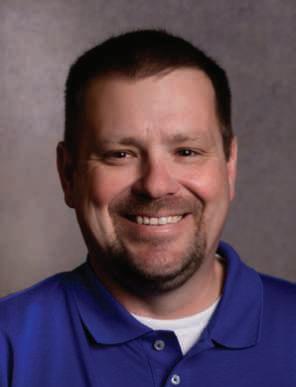
Last month, I discussed the completion of the first segment of the transmission line rebuild along Eglin Street and Cheyenne Boulevard, a significant infrastructure enhancement project we undertook. Since then, we’ve made further progress by initiating the construction of the second phase of this project, extending from our Rapid City substation eastward for three-quarters of a mile.
These projects are integral to our long-term strategic plan, as outlined in our 4-year capital work plan. It’s important to note that our work plans are not just strategic imperatives, but also regulatory requirements mandated by the Rural Utilities Service (RUS), an agency under the United States Department of Agriculture (USDA). RUS plays a crucial role in supporting rural electric cooperatives, like West River Electric, by providing essential loans to facilitate infrastructure development and improvements. RUS requires cooperatives to develop and submit work plans as part of their regulatory oversight and funding processes. There are several


reasons for this requirement, a few being:
• Strategic Planning: Work plans help West River Electric articulate its strategic objectives and outline the steps needed to achieve them, ensuring alignment with broader organizational goals.
• Accountability: Work plans provide a basis for accountability by documenting planned activities and resource allocations, enabling us to meet stated objectives and utilize funds effectively.
• Transparency: Our work plans clearly state our goals and priorities to stakeholders, including regulatory agencies, funding sources, and community members.
In our 2024 work plan, West River Electric is committed to constructing and rebuilding 36 miles of line to accommodate the recent growth across our service territory. These projects involve a mix of overhead and underground upgrades aimed at enhancing the reliability of our infrastructure. It’s important to note that these figures do not include all the new services and subdivisions emerging in the area. Any new construction would be in addition to the figures mentioned above.
The decision to prioritize these rebuilds reflects the aging condition of certain sections of our electrical infrastructure and our proactive approach to mitigate potential issues that could lead to system outages. 881900
In addition to distribution upgrades, we are working on completing the new Ashland Substation, located off Country Road. Progress on this project has been promising, and we anticipate providing further updates in upcoming communications. Furthermore, we’re committed to the ongoing rebuild of 3.8 miles of our transmission lines. 983900
As you can see, the employees at West River Electric are hard at work, staying ahead of growth in the area and making necessary improvements to ensure system reliability. If any of the mentioned projects are not completed this year, they will automatically be carried over to 2025 and given priority for completion.
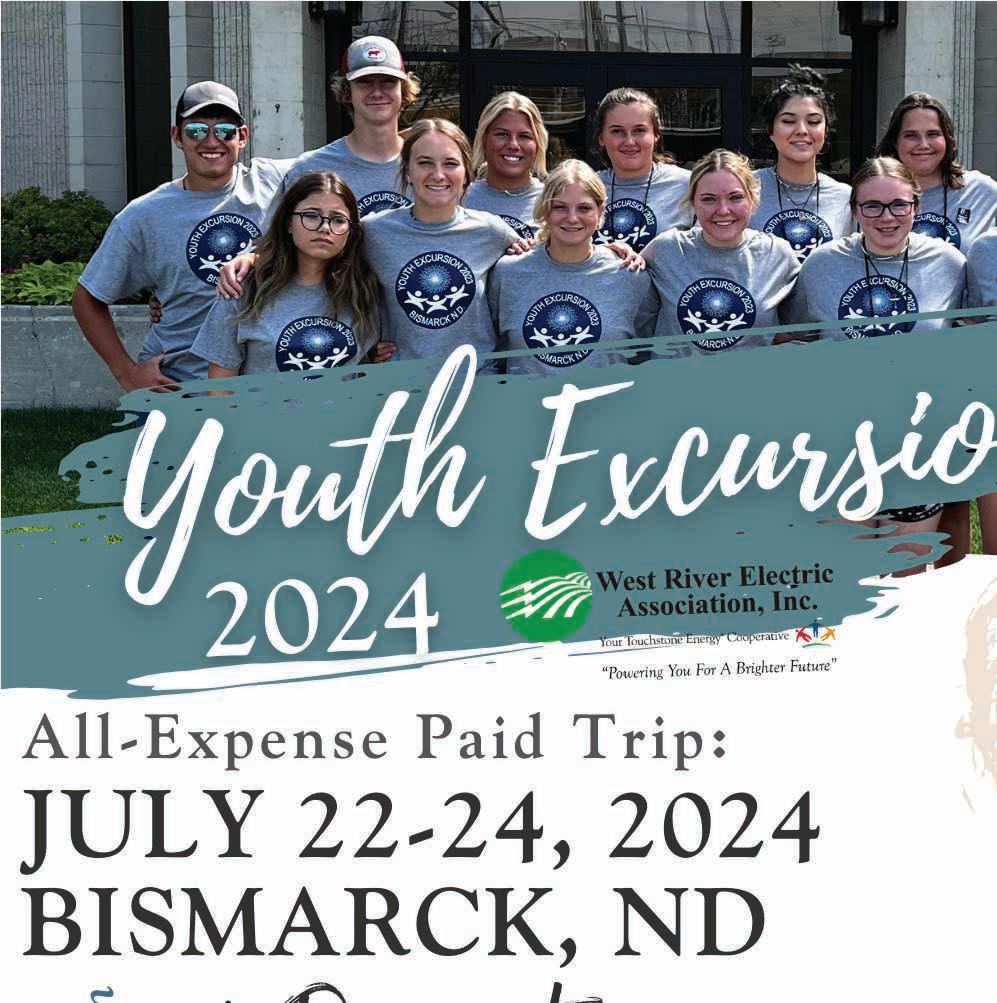




Centuries ago, the arrival of European traders in North America marked the beginning of a multicentury hunt for furs. The pelt of the North American beaver was at the forefront of this fur trade, prized for its use in crafting felt hats. These stylish hats fueled an ever-increasing demand for beaver furs that persisted for centuries, leading to a severe decline in beaver populations. By the early 1900s, beavers had become critically endangered, nearly vanishing from the expansive wetlands across the continent.
As the beavers dwindled, so did their dams. Lazy streams and rivers, once
tamed by beaver dams, began to flow more rapidly. The disappearance of the dams caused waterways to narrow and floodplains essential to willow trees and cottonwoods to vanish. The loss of these beaver-engineered habitats set the stage for the significant erosion of precious prairie lands.
In 2020, The Nature Conservancy set out to combat these issues by launching a project in partnership with the Natural Resources Conservation Service, South Dakota State University and local conservation agencies to restore stream health in western South Dakota.
“Our West River streams make up a small percentage of the total landscape – just under two percent of our total acreage is stream and valley
bottom,” said Lori Brown, riparian health program manager with The Nature Conservancy. “Yet, nearly everything in the prairie depends on these streams, including us in our rural communities.”
Prior to launching the project, The Nature Conservancy engaged local landowners in discussions to best understand their challenges and needs. During the discussions, several landowners faced similar issues: streams were eroding the land, fence lines were being washed away, and the water table was too low. Despite having effective tools for managing grasslands, landowners lacked the means to best maintain healthy streams.
“We needed to explore options
that any landowner could implement – strategies that didn’t require a hydrologist to implement or an engineer to design,” Brown said. “Our ranchers and landowners are some of the best stewards of the land. A lot of them are hungry for information and tools that can help them help the land.”
The solution was simple, inspired by the ingenious works of an aquatic rodent: an artificial beaver dam. After all, if a beaver can engineer a dam, why can’t a landowner?
Known as beaver analog devices, these simple speedbump-like structures quickly became integral to a broader strategy known as process-based restoration, a method that uses nature to help nature. Composed of locally sourced sticks, rocks and mud, beaver analog devices replicate a key natural process once performed naturally by beavers centuries ago. When established correctly, they filter water,
slow fast-flowing streams, and even recreate floodplains.
After settling on a solution, The Nature Conservancy set out to implement the idea in the real world, working with 10 landowners to help build and record the effects of the simulated beaver dams.
“Every day that I go out to one of these sites and I see that the beaver dams that we have built aren’t totally washed out, it absolutely amazes me,” Brown said. “I’ve read the manuals and I know how it’s supposed to work, but I’m always in awe at what we are able to accomplish with the right building blocks in place.”
After four years of the project, Brown said there is a lot to be excited about as the benefits of the project are evident. Signs of stream restoration are well underway. Sediment is accumulating rather than eroding, and revitalized floodplains are sprouting new willow trees.
“Without any planting on our part, woody species are now returning to these stream channels,” Brown said. “The next step will be to lean into the success of this project. We want to act as a support for our conservation partners and other interested landowners that want to see their stream condition improve on their properties.”
Others have been inspired by demonstrations led by The Nature Conservancy and other conservation organizations in the state to take action to slow down and hold water.
“We are just starting to see some of the effects from our outreach and education side of this project,” said Brown. “The most rewarding part of this effort has been hearing the stories from local ranchers and landowners and hearing them get excited about the project.”

SHINING THE LIGHT ON WEST RIVER ELECTRICS DEDICATED EMPLOYEES
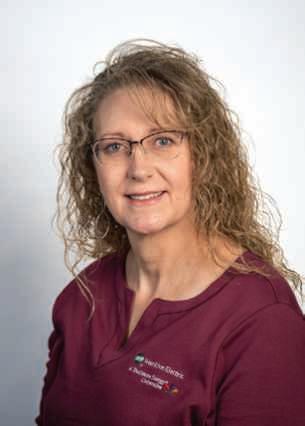
HOW LONG HAVE YOU BEEN WORKING WITH WEST RIVER ELECTRIC?
WHAT DOES YOUR JOB ENTAIL?
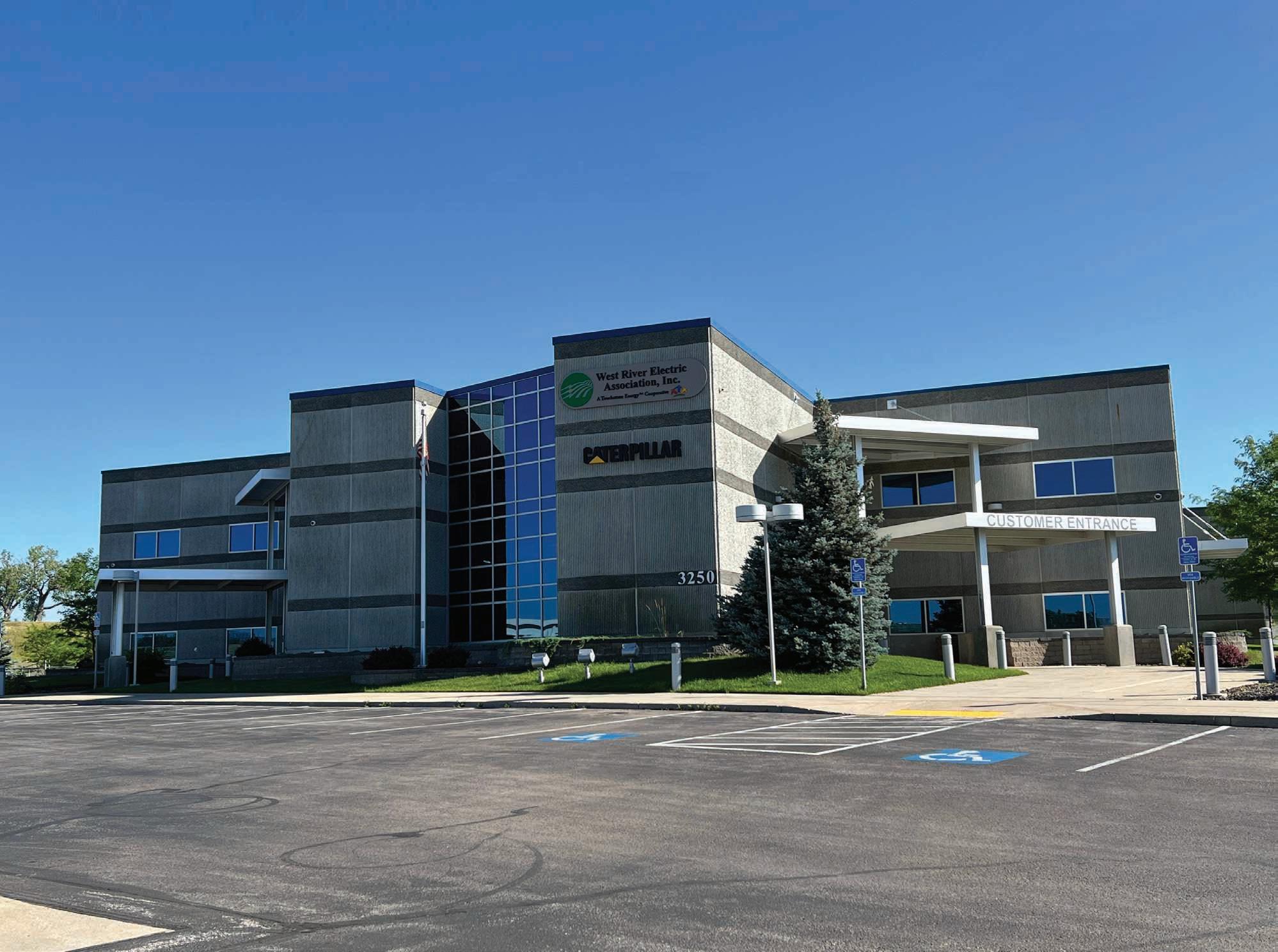
ADMINISTRATIVE ASSISTANT
c o n t i n u i n g e d u c a t i o n f o r o u r D i r e c t o r s a n d E m p l o y e e s .
WHAT DO YOU LOVE MOST ABOUT WEST RIVER ELECTRIC? A b o v e a l l , t h e t e a m w o r k i n v o l v e d i n p r o v i d i n g t h e b e s t s e r v i c e a v a i l a b l e
t o o u r m e m b e r s i s r e w a r d i n g .
WHAT IS YOUR FAVORITE MEMORY SINCE STARTING WORK AT WEST
T o o m a n y t o p i c k j u s t o n e , b u t t h e b e s t m e m o r i e s a r e t h o s e t h a t m a k e p e o p l e s m i l e .
HOW WOULD YOU DESCRIBE WEST RIVER ELECTRIC IN THREE WORDS?
D e d i c a t i o n , C o m m u n i t y , S a f e t y
WHAT MOTIVATES YOU TO GET UP AND GO TO WORK EVERY DAY?
M y f a m i l

ENNING FOREMAN ELECTRIC? RIVER ELECTRIC?
t
e a c h o n e o f u s d o e s e v e r y d a y a n d t h e s u p p o r t w e g i v e t o e a c h o t h e r a t W R E A m a k e s
a h u g e d i f f e r e n c e i n o u r l i v e s a n d t h e m e m b e r s ’ l i v e s .
HOW LONG HAVE YOU BEEN WORKING WITH WEST RIVER ELECTRIC?
I h a v e b e e n w i t h W R E A f o r 3 3 y e a r s . WHAT DOES YOUR JOB ENTAIL?
I a m t h e E n n i n g F o r e m a n . M y d a y t o d a y i n v o l v e s t a k i n g c a r e o f t h e
p o w e r l i n e s i n t h e E n n i n g a r e a , w o r k i n g w i t h t h e m e m b e r s a n d m a k i n g
s u r e m y o t h e r d a i l y d u t i e s a r e g e t t i n g c o m p l e t e d . WHAT DO YOU LOVE MOST ABOUT WEST RIVER ELECTRIC?
B e i n g a b l e t o w o r k w i t h g o o d c o - w o r k e r s . WHAT IS YOUR FAVORITE MEMORY SINCE STARTING WORK AT WEST RIVER
T h e r e a r e t o o m a n y t o t a l k a b o u t b u t i f I h a d t o c h o s e j u s t o n e i f
w a l k e d a w a y u n h a r m e d .
HOW WOULD YOU DESCRIBE WEST RIVER ELECTRIC IN THREE WORDS? M o t i v a t i n g , r e w a r d i n g
WHAT MOTIVATES YOU TO GET UP AND GO TO WORK EVERY DAY? M y f a m i l y a n d b e i n g a b l e t o w o r k w i t h t h e m e m b e r s e v e r y d a y .

If you locate your account number anywhere in this issue of West River Electric’s Cooperative Connections, you will be a winner. There will be five account numbers placed randomly throughout the publication. If you spot your account number and notify our office before the 10th of the next month, you will receive a $10 credit on your next bill.
3250 E Hwy 44, Rapid City, SD
Monday-Friday 7 a.m. to 5 p.m.
605-393-1500
1200 W 4th Ave, Wall, SD
Monday-Friday 7 a.m. to 5 p.m. 605-279-2135
A night depository is available at both offices for your convenience.
Contact 605-279-2135 or 605-393-1500 during office hours. E-mail us at info@westriver.coop for questions on your account.
Contact 605-279-2135 or 605-393-1500 in the event of an outage or other emergency. Our calls are answered 24/7.
JUNE 12-JULY 20, 2024
Prairie Repertory Theatre
Summer Season
Oscar Larson Performing Arts Center
Brookings, SD
605-688-6045

JUNE 1
Spring Volksmarch
Crazy Horse Memorial
JUNE 1
Black Hills 2SLGBTQ+ Pride Parade
10 a.m.
Downtown Rapid City
JUNE 8
To have your event listed on this page, send complete information, including date, event, place and contact to your local electric cooperative. Include your name, address and daytime telephone number. Information must be submitted at least eight weeks prior to your event. Please call ahead to confirm date, time and location of event.
Mt. Rushmore Rodeo Palmer Gulch Resort Hill City, SD
JUNE 8
Sportsman’s Bash 2 p.m.
Weston County Senior Center Newcastle, WY
605-440-1842
JUNE 9
1880 Train Old West Shootout 5 p.m. Hill City, SD
JUNE 14-15
Fine Arts in the Hills Show & Sale
Hill City, SD
JUNE 14-16
Highmore’s Old Settler’s Day Weekend Highmore, SD
JUNE 15
The Big Mick The Mickelson Trail 605-673-5154
JUNE 15-16
Friends of the Library Book Sale
Hill City Public Library Hill City, SD
JUNE 18
Double O Okobojo Oldies
The Life & Music of Badger Clark, presented by Pegie Douglas MIke Finley’s Shop Sully County, SD RSVP Sully Co. Auditor 605-258-2541
JUNE 20
Kadoka Ranch Rodeo Kadoka, SD
JUNE 21-22
Scavenger’s Journey
Yard sales, farmer’s markets & specialty shops Wall, SD to Wagner, SD www.scavengersjourney.com
JUNE 21-22
Kadoka Reunion Weekend & PRCA Rodeo Kadoka, SD
JULY 4
Philip Volunteer Fire Dept. Annual Firework Display Begins at dusk Lake Waggoner Philip, SD
JULY 19
Gumbo Ridge Bronc Ride Murdo, SD
JULY 20
Murdo Ranch Rodeo Murdo, SD
JULY 19-21
Custer Piecemakers Quilt Show
9 a.m.- 4 p.m. each day Custer School Armory Custer, SD
JULY 26
Disability Resource Fair
11 a.m. -2 p.m. Main Street Square Rapid City, SD
JULY 26-28
Meghan Newsam Community Celebration Murdo, SD
AUG. 10
Pioneer Auto Museum 70th Anniversary Murdo, SD
Note: Please make sure to call ahead to verify the event is still being held.